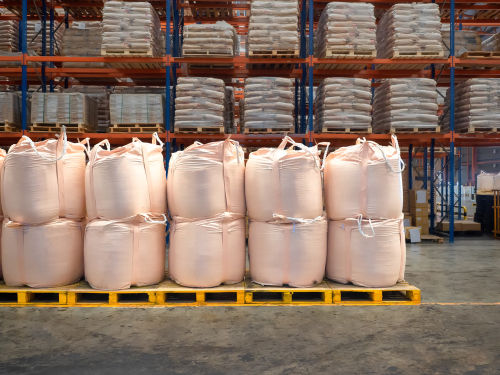
If you need to transport a large amount of dry goods like seeds, grains, or industrial materials, you will likely use a super sack for safe handling. These massive containers can hold hundreds of pounds of cargo without breaking a sweat. They also have a loose shape that helps you make the most of your storage space, as opposed to working with rigid containers. Yet, with so much weight hanging in the air, you need to use caution when handling these bulk bags. Use these tips for successful super sack handling.
1. Add a Handling Tag
If you plan on using a super sack to move or transport your goods, you need to make sure every sack has a special handling tag. This tag is full of important information regarding the contents of the sack and how the sack should be handled. The tag should describe the contents and how much they weigh, and it should include any safety information, including the risk of static shock, how to transport the sack, and how to load and unload the bag. Including this tag on your sack is required by U.S. law, so make sure the tag is up-to-date and firmly attached to the sack.

2. Use a Filling Frame
You should use a filling frame when loading your super sack. These containers can hold hundreds of pounds of dry goods, so, if the sack isn’t in the right position during the loading process, it could easily tip over and injure one of your workers. You’ll likely use a forklift to hold the bag up during the loading process, but the filling frame is there to provide extra support and make sure the sack stays in the right position, so the sack fills evenly.
3. Keep the Space Ventilated When Loading and Unloading
As an employer, you need to provide clean air for your employees. Most super sacks are used to store dry goods like grains, seeds, and even industrial goods. These goods can carry a lot of dust and residue. As you go about loading and unloading your super sacks, you’ll likely notice a large cloud of dust forming in the air. All that particulate matter will rush out of the container, filling the room with a dusty residue. That’s why you need to keep the room ventilated, so your employees can breathe easily throughout the process. Using a face mask or eyeglasses will also come in handy.
4. Use Proper Discharge Materials
These materials can also release a powerful static charge when loading and unloading. This charge could even ignite the contents of the bag or the bag itself. That’s why you need to use special spark discharge materials to make sure the bag is safe to load or unload. Different discharge materials may be required for certain cargo, so research the proper handling instructions for your materials.

5. Don’t Overfill the Super Sack
This should go without saying, but it’s worth repeating. You should never overfill your super sack. Every bag comes with certain weight limitations, so make sure you follow these instructions before you start loading in your cargo. If the bag is too full, it increases the chances of the bag falling or toppling over, which could easily injure one of your employees.
6. Support the Bag When Unloading
Unloading the contents of the bag can be just as hazardous as filling the bag. Instead of having the bag topple over, a worker could get crushed underneath the weight of the cargo if the contents spill out too fast. Typically, the bag will have a spout that releases the contents of the bag. Before the person reaches in to open the spout or cut open the bag, you need to make sure the bag is properly supported from below as well as above.
If the bag is hanging midair during the unloading process, the cargo could pour on top of the worker as soon as the spout has been cut, trapping them in the middle. Use plastic tubes, lumpers (laborers who unload cargo), or paddles and crates to support the sack from below when you cut it open. This slows the release of the materials, so no one will be injured in the process.
Super Sack Safety for the Win
Store your dry goods in bulk bags for easy, reliable handling and transportation. Make sure you understand how to properly use the bag before you get started or someone could get injured in the process. Keep these tips in mind for safe super sack handling.
